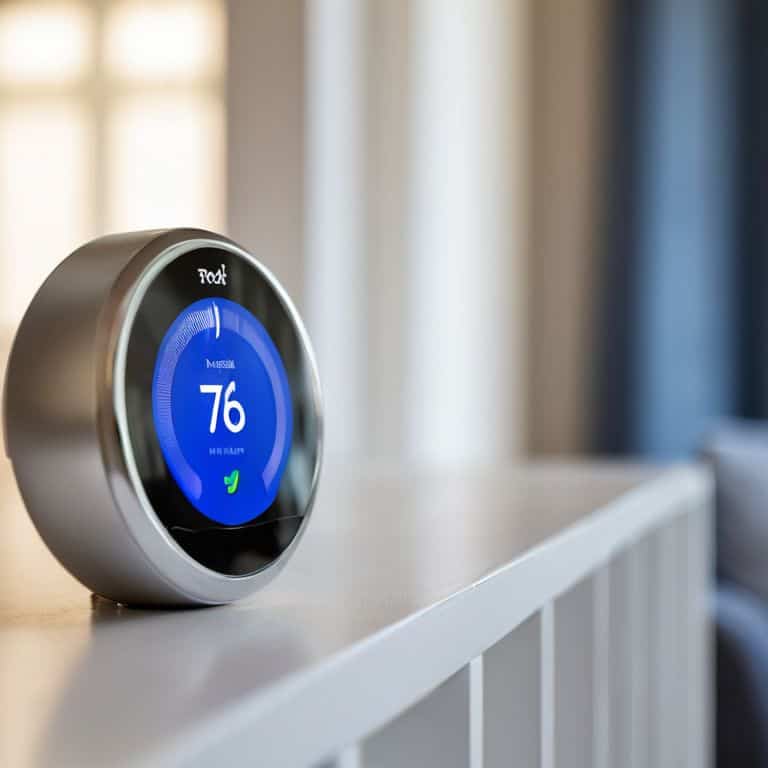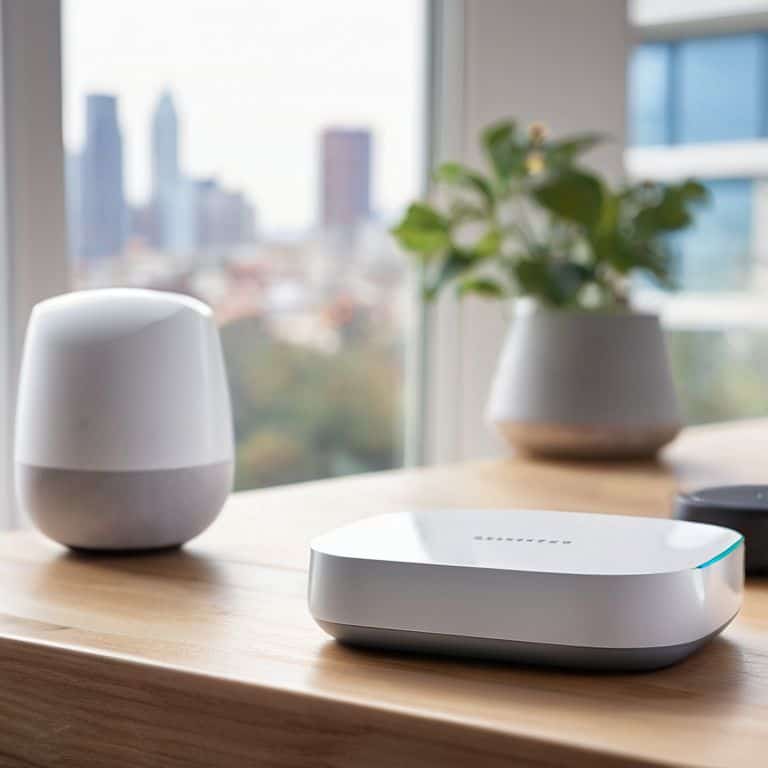I still remember the first time I tried to set up a smart home system – I was overwhelmed by the plethora of options and technical jargon. What is zigbee and z-wave, anyway? It seemed like every device used a different protocol, and I was frustrated by the lack of clear information. As an interior designer, I’ve seen how smart home technology can elevate a space, but it’s often shrouded in mystery. I believe that creating a beautiful and functional home shouldn’t be daunting, especially when it comes to understanding the basics of zigbee and z-wave.
In this article, I promise to cut through the hype and provide you with practical advice on what zigbee and z-wave are, and how they can be used to create a seamless smart home experience. I’ll share my own experiences, from setting up devices to troubleshooting common issues, to help you make informed decisions about your own space. My goal is to empower you with honest, experience-based guidance, so you can focus on creating a home that reflects your personal style, without breaking the bank or getting lost in technical details.
Table of Contents
Unlocking Zigbee Secrets

As I delve into the world of smart home automation protocols, I’m excited to share my findings on Zigbee. This technology has been a game-changer for my own home, allowing me to control multiple devices with ease. When it comes to wireless home network standards, Zigbee is a top contender, offering a reliable and efficient way to connect my devices. I’ve noticed that it’s particularly useful for smart lighting control systems, making it easy to adjust the ambiance of my space with just a few taps on my phone.
One of the things I love about Zigbee is its compatibility with a wide range of devices. However, I’ve also encountered some IoT device compatibility issues along the way. To overcome these challenges, I’ve had to get creative with my home automation hub reviews, researching and testing different options to find the one that works best for my unique setup. It’s been a fun and rewarding process, and I’m excited to share my discoveries with you.
In my experience, Zigbee has been a great choice for my smart home needs. When comparing Zigbee vs Z-Wave, I’ve found that Zigbee offers a more flexible and adaptable solution. With its ability to support a large number of devices, it’s perfect for those who want to create a comprehensive smart home automation system. Whether you’re just starting out or looking to upgrade your existing setup, I highly recommend exploring the world of Zigbee and discovering its many benefits for yourself.
Wireless Home Network Standards
When it comes to creating a seamless smart home experience, understanding the wireless standards at play is crucial. This is where Zigbee and Z-Wave come in, two popular protocols that enable devices to communicate with each other effortlessly. By grasping these standards, you can design a home network that is both efficient and reliable.
To achieve this, it’s essential to consider the network topology, which refers to the arrangement of devices within your home network. This includes how devices are connected, routed, and interact with one another, ultimately determining the overall performance and security of your smart home system.
Zigbee vs Z Wave the Smart Choice
When it comes to smart home automation, choosing between Zigbee and Z-Wave can be overwhelming. But, let’s break it down – compatibility is key. You want to ensure that your devices can seamlessly communicate with each other, creating a harmonious and efficient smart home ecosystem.
In the end, the decision between Zigbee and Z-Wave comes down to your specific needs and preferences. Consider the unique features of each protocol and how they align with your vision for your dream sanctuary. By making an informed choice, you’ll be well on your way to creating a smart home that’s not only stylish but also functional and enjoyable to live in.
What Is Zigbee and Z Wave

As I delve into the world of smart home automation, I’m excited to share my discoveries about zigbee vs z-wave comparison. These two protocols are the backbone of wireless communication between devices, allowing us to control and monitor our homes with ease. But what makes them tick? Let’s start with the basics: Zigbee and Z-Wave are both smart home automation protocols that enable devices to talk to each other, creating a seamless and integrated experience.
When it comes to wireless home network standards, Zigbee and Z-Wave have their own strengths and weaknesses. Zigbee, for instance, is known for its iot device compatibility, making it a popular choice for smart home enthusiasts. On the other hand, Z-Wave is renowned for its reliability and smart lighting control systems. As I explore these protocols, I’m fascinated by the possibilities they offer for creating a truly connected home.
In my quest to create the perfect smart home sanctuary, I’ve encountered some home automation hub reviews that have been incredibly helpful. By understanding how Zigbee and Z-Wave work together, I can make informed decisions about which devices to choose and how to integrate them into my home. Whether you’re a seasoned smart home enthusiast or just starting out, understanding these protocols is key to unlocking the full potential of your space.
Iot Device Compatibility Issues Solved
When it comes to creating a seamless smart home experience, device compatibility is key. I’ve found that one of the biggest hurdles my followers face is getting all their devices to play nice with each other. But with Zigbee and Z-Wave, those days are behind us. By using these protocols, you can ensure that your devices are speaking the same language, making it easier to control and automate your space.
To solve those pesky compatibility issues, I always recommend doing your research before bringing a new device into your home. Look for products that are certified to work with your existing system, and don’t be afraid to reach out to the manufacturer if you have any questions. By taking the time to do your due diligence, you can create a smart home that’s truly greater than the sum of its parts.
Smart Home Automation Protocols Compared
When it comes to smart home automation protocols, it’s all about finding the right fit for your unique space. Comparing protocols is essential to understanding which one will seamlessly integrate with your existing devices. I’ve found that considering factors like range, power consumption, and compatibility is crucial in making an informed decision.
In my own home, I’ve experimented with various protocols, and I can confidently say that device interoperability is key to a hassle-free smart home experience. By choosing protocols that play nicely with each other, you can create a cohesive and efficient system that makes your life easier and your space more enjoyable.
5 Essential Tips to Unlock the Power of Zigbee and Z-Wave
- Start by assessing your smart home needs: take stock of the devices you want to connect and control, and choose the protocol that best fits your requirements
- Consider the range and interference: Zigbee and Z-Wave have different ranges and interference tolerances, so think about the layout of your home and where your devices will be placed
- Look for interoperability: choose devices that are compatible with both Zigbee and Z-Wave, or opt for a hub that can bridge the two protocols for seamless communication
- Think about security: both Zigbee and Z-Wave have their own security protocols, but it’s essential to understand how they work and take steps to protect your network from potential vulnerabilities
- Experiment and have fun: don’t be afraid to try out new devices and configurations – with Zigbee and Z-Wave, the possibilities are endless, and you might just stumble upon your dream smart home setup
Key Takeaways to Unlock Your Smart Home's Potential
Zigbee and Z-Wave are two popular home automation protocols that enable seamless communication between your smart devices, making it easy to control and monitor your home’s atmosphere, security, and energy efficiency
By understanding the differences between Zigbee and Z-Wave, you can make an informed decision about which protocol is best suited for your smart home needs, ensuring a reliable and efficient wireless network
Whether you’re a smart home newbie or a seasoned pro, mastering Zigbee and Z-Wave can help you create a personalized, high-tech sanctuary that’s both stylish and functional, without breaking the bank or sacrificing your unique aesthetic
The Smart Home Revolution
Zigbee and Z-Wave are not just protocols, they’re the secret ingredients that turn your house into a home, where every device talks to each other in perfect harmony, and all you have to do is sit back, relax, and enjoy the magic!
Isabelle Hart
Bringing it All Together: The Zigbee and Z-Wave Revolution

As we’ve explored the world of Zigbee and Z-Wave, it’s clear that these smart home automation protocols are game-changers. From understanding the differences between Zigbee vs Z-Wave to navigating wireless home network standards and IoT device compatibility, we’ve covered it all. The key takeaway is that both Zigbee and Z-Wave offer unique benefits, and by choosing the right protocol for your needs, you can create a seamless and effortless smart home experience. Whether you’re a tech enthusiast or just starting to dip your toes into smart home automation, it’s exciting to think about the possibilities that these protocols offer.
So, as you embark on your own smart home journey, remember that the power to create your dream sanctuary is in your hands. Don’t be afraid to experiment, try new things, and make your space truly yours. With Zigbee and Z-Wave, the possibilities are endless, and I’m thrilled to see how you’ll use these technologies to bring your unique vision to life. Happy decorating, and don’t forget to share your smart home adventures with me on social media!
Frequently Asked Questions
How do I choose between Zigbee and Z-Wave for my smart home devices?
Honey, choosing between Zigbee and Z-Wave is all about compatibility! Consider the devices you already have and which protocol they use. If you’re starting from scratch, think about the ecosystem you want to join – some hubs only support one or the other. I’ve got a handy cheat sheet on my blog to help you decide, and trust me, it’s a total game-changer!
Can I use both Zigbee and Z-Wave protocols in the same home automation system?
Absolutely, darling! You can totally mix and match Zigbee and Z-Wave devices in your smart home setup. Many hubs and controllers support both protocols, making it easy to create a seamless and integrated system. Think of it as mixing high and low furniture pieces – it’s all about balance and style!
What are the security implications of using Zigbee or Z-Wave for my smart home network?
Hey, lovely! So, you’re wondering about the security implications of Zigbee and Z-Wave? Honestly, both have their pros and cons, but with proper setup and encryption, you can minimize risks. I’ll dive into the details in my next post, but for now, know that using a strong network password and keeping your devices updated is key to a secure smart home sanctuary!



